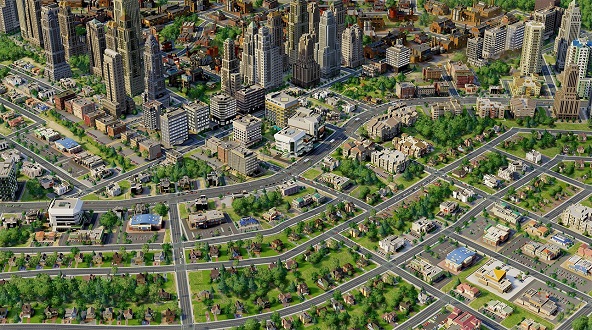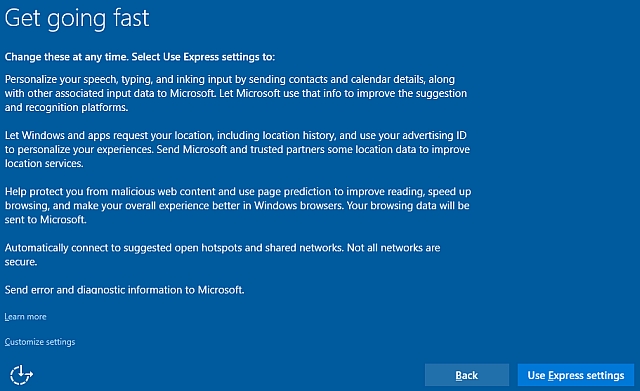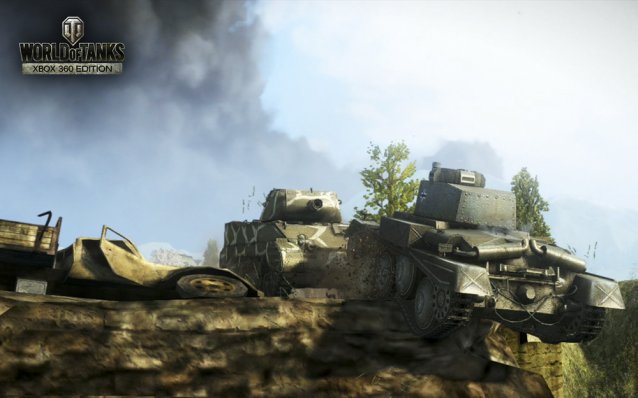SimCity 2013 Guide
Find Game Front’s extensive video library of cheats and guides on our free mobile apps.
GameFront Video Walkthroughs app for iOS
GameFront Video Walkthroughs app for Android
Get tips for managing a sprawling metropolis with our in-depth gameplay guide for EA’s SimCity, the latest iteration in the city management simulation series. There are so many options and forces at play, making a successful city is about as hard as any reasonable person might expect — that’s why we’re going to give you a crash course on managing a fledgling urban paradise.
Here, you’ll learn how to balance the forces of a city, how to get a strong economy working in your favor, and how to make the populace happy. Rome wasn’t built in a day, but we’ll help create your very own SimCity in just a few hours. For more specializing guides, easter eggs and secrets, check out our list of SimCity cheats.
Air Pollution
In SimCity 2013, Air Pollution is going to play a major part in your gameplay. It is the leading cause of problems in Sim World.
You will NOT be able to avoid pollution entirely, especially early on in the game. If you don’t plan around it, however, it will have negative consequences for your Health Department and increase crime.
In the early stages of the game, you will need to build Power Plants to use as cheap sources of energy. These will.. you guessed it.. create a bunch of pollution! In order to build around it, you will need to use your Wind Map. The Wind Map can be found in Data Views.
In SimCity, you will either be building Residential zones (where your citizens will live) or Industrial Zones. You will need to try to keep the Industrial Zones far from the Residential Zones. You can also put parks close to your Residential zones to help deal with some of that pollution.
Zones
When building zones towards the beginning of the game, your lack of funds will prohibit you from using high density roads. Stick with medium, as the low density roads are going to stunt your growth. As the game progresses, you will be able to afford high density roads and make upgrades to the ones you’ve placed already.
Your initial zones are also not going to be very organized. Use them as a blueprint that will change as your income increases. You have to start somewhere- don’t worry too much about where. Make sure to place barriers between the industrial and residential zones so your citizens don’t get harmed by the Air Pollution (see previous section).
Be sure to build your zone around a Specialization when possible. This will give you a guidelinE as to where you should place your structures.
Eventually, you are going to have to create at least nine Residential neighborhoods as well as one Commercial block per three neighborhoods.
Government Buildings
Unlike real life, government buildings are quite useful for the citizens of Sim City. They tend to take up a lot of space, but on the flip side, also up the value of the surrounding structures.
The Mayor’s house or mansion should be placed in a Residential district. Pick which one carefully- it will optimize the happiness of the area and will increase its prosperity exponentially. As incomes increase, population densities increase. If you play your cards right, it will snowball into a system that turns out a very hefty profit.
Construction
Roads automatically convey power lines for Power, pipes for Sewage, and pipes for Water.
The interface in this New Sim City will change color from their regular dark gray to let you know what issues need the most immediate attention in your city.
The way you lay down your roads in SimCity is going to determine the success of your towns. As you progress through the game, you will continue to improve on being able to balance not cramping roads together while still providing efficient transportation for your citizens.
High traffic roads will allow for higher Zone Density. If you’re building lower traffic roads, which you will have to do quite a bit towards the beginning of the game, you will notice they have stop signs instead of traffic lights. These increases the commute time for your citizens and will eventually become problematic. Hopefully by that point though, you will have built up enough money to upgrade to better roads and expand.
Mining
Mining is going to be a good source of income for you early in the game. While you’re not going to be able to make bulk sums, it is a quick and consitent way to get that cash flow going.
If you specialize in mining, you will have the advantage of being able to get coal and cut the costs of your power plants.
Mine shafts are extremely cheap by the hour and will attract uneducated and low wealth workers. This, along with increased pollution and health hazards, constitute the disatvantages of mining.
Some useful notes on Ore Mines:
Ore Shafts increase rate of extraction by 24 tons each day. They cost $16,000 and are a worthwhile investment when you have the money to spend. Splurging on these too early can put you in dire straits. They cost $16,000 and are $40/hr for their upkeep. There is a limit of 4 per Ore Mine for these shafts.
You can also install up to 4 Ore Delivery truck garages in your mine. These guys cost $10,000 and will cost you $50 by the hour for upkeep.
If you have a sweet mine going on and feel like putting icing on the cake, you can choose to get a decorative sign for $200.
And now for some notes on Coal Mines:
Coal Mines produce 24 tones a day and cost $22,500 to get. You will also have to pay an upkeep fee of $150/hr. In order to unlock a Coal Mine, you will also need Water, Power, at least 7 industrial buildings and coal beneath the location.
In addition to using coal to power your own facilities, you can also sell it on the Global Market via a trade depot.
Coal shafts cost $25/h to upkeep after an initial purchase price of $14,000. They increase your rate of extraction by 24 tons a day. As with everything else it seems like, you can have up to 4 of these in one mine.
The Coal Delivery Truck Garage functions in the same way as the Ore Delivery Truck Garage. It costs $10,000 andwill require $50/h in upkeep expenses.
Yes, you can purchase a decorative sign for $200. If you don’t have anything else to spend your money on, that is..
Smelting Factories will turn your raw ore into metal. If you have coal, you can make alloy. The modules you add to your Smelting Factory will determine what type of an alloy you can make. Both metal and alloy can be sold on the Global Market.
A Smelting Factory will weigh down your wallet- they cost $54,500 to build (they are just rubbing that exta $500 in our face, huh?) and a whopping $300/hr to maintain. They produce 24 tones a day and will require a Smelting Devision modular, which you can build at a Metals HQ (we’ll get to that next!)>
You can add an Alloy Furnace to your Smelting Factory for a price of $36,000 + $150/hr upkeep. If you can manage to scrounge one up, they will increase the alloy output by 24 tons a day. Limit of 4 per Smelting Factory.
The Metal Furnace (yes, you guessed it) increases the METAL output of a Smelting Factory by 24 tons each day. Cost: $21,000. Upkeep fee: $50/hr. Synthesizing your own metal at a more efficient rate? PRICELESS.
You can add Smelting Deliery Truck Garages to your Smelting Factories. They cost a pretty mellow $10,000, with $50/h upkeep and 4 being the max limit. These will be able to accommodate a delivery truck with a 5 ton capacity to deliver your finished products much faster.
In order to build yourself Smelting Factories, you will have to make a Metals HQ . You can unlock these when you mine at least 96 tons or coal or ore in a single day. Oh, and when you have $37,500 to spend and are ready to drop another $450 per hour for the upkeep.
A Metals HQ is very important for its Modules. Through the Smelting Division , you will be able to eventually build a Smelting Factory. They cost $200,000 to open and $400/hr to run. It’s a heavy investment.. don’t get too bummed if you can’t make it as soon as you’d want.
You can also create an Engineering Division at the Metals HQ for the same price as the Smelting Division. These will eventually give you the ability to unlock an Advanced Coal Mine (we will get to these soon).
The Commerce Division essentially serves the same function as the truck garages in your other establishments. They increase the export rates of Ore and Coal and cost the same amount to implement as the Engineering and Smelting Divisions.
Even though the Commerce Division does not unlock the ability to build any other facilities, I would actually recommend unlocking it first for that reason. Once your export rates are up, you will be able to generate the income to build the other divisions much more efficiently.
An Advanced Coal Mine will yield 96 tons per day. Once you have established an Engineering Division at your Metals HQ, you will be able to unlock an Advanced Coal Mine for $60,000 to $400/hr upkeep.
If you add on an Advanced Coal Shaft, it will increase the rate of extraction by another 48 tons each day. The limit for these caps off at 8 per mine, giving you much more room for expansion. The cost of an advanced coal shaft, however, is $50,000 + $250/hr.
A heavy Coal Delivery Truck Garage will enable a truck with 5 ton capacity to deliver coal faster. You can install these for $20,000 and $50/hr in upkeep. Unlike the Advanced Coal Shaft, the limit for these delivery trucks caps off at 4 even though you’ve upgraded your mine.
Drilling
Unfortunately, SimCity is a bit behind on Global Warming. You are going to have to pump a large amount of oil from the wells in the ground. Oil can be used to energize power plants or sold in the ever useful Trade Depot.
Along with mines, you will also befriend Oil Wells very quickly in this game. They cost $37,500 to make and an additional $150/hr for upkeep. Standard oil wells will yield 2,400 barrels a day. It’s not as much as it sounds, believe me.
To unlock an oil well, you will need Water, Power, at least 7 industrial buildings, and probably some oil underneath the land you want to build it on.
To increase the efficiency of your oil wells, you will be able to modulate them with an Oil Pumpjack. This pumpjack will cost you $10,000 with an additional upkeep of $30 per hour. Oil pumpjacks are limited to 10 per oil well and increase extraction by 1,200 (each). This should be your first investment after opening up your well- more efficient extraction will allow you to pay for the other modules with less strain on your funds.
You can also add an Oil Delivery Truck Garage to your well. A truck has a 500 barrel capacity when it comes to oil. They cost $10,000 with a $50 maintenence fee by the hour and will speed up your deliveries.
Yes, you can add an Oil Well sign if you would like. Again, it is decorative and serves no actual purpose (besides making you feel LEGIT :]).
If you extract over 9,000 barrels of oil from your well in a single day, you will be able to unlock a Petroleum HQ. They cost $37,000 initially and $450 to keep operating.
Installing a Refining Division
in your HQ will give you the ability to eventually build an Oil Refinery. These guys cost $400,000 to make and $400 an hour to keep operating.
The Commerce Division costs the same logistically as the Refining Division and will give you access to advanced oil storage rooms at the Trade Depot. Since there is no efficienty module for these HQs, I would suggest going for this one first.
Oil Refineries will allow you to create plastic. Like everything else, you will be able to make a hefty profit from this on the Global Market. Oil Refineries can also take your crude oil and turn it into fuel. The outcome will depend on which of the modules you utilize. Oil Refinieries cost $73,000 in initial investment and an additional $300 per hour to maintain. If you have the funds, you will need to install a Refining Division in your Petroleum HQ.
Apart from the obligatory $200 decorative sign, you will be able to put in a Fuel Distillation Unit in your Oil Refinery. It will produce 2,400 barrels of fuel per day and will cost you $46,000 to install and $150/hr for upkeep. These are limited to 4 per refinery (in total with Plastic Polymizers).
A Plastic Polymizer will cost $30,000 to get and $50/hr to hold on to. They produce 2,400 crates of plastic a day. You can have up to four of these and Fuel Distillation Units total. I would recommend a 3:1 fuel distillation unit to plastic polymizer ratio. If you have one running efficiently, it will suffice.
You can install an Oil Refinery Delivery Truck Garage for an initial cost of $10,000 and an upkeep fee of $50/hr. You’re probably used to the drill by now- it will allow you the use of a 5 ton or 200 barrel capacity (depending on whether you’re dealing with plastic or fuel) delivery truck to facilitate the delivery of your goods. I would recommend installing a couple of these first, and once you’re delivering goods faster, you can up your efficiency by getting the distillation units and polymizers. Yhe outflow of goods is important to establish from the start in this scenario.
Electronics Guide
As you might intuitively have guessed, the Electronics specialization is more expensive and resource consuming than something like mining or drilling would be. On the flip side, it is also the most profitable.
As is not the case with coal mines, Electronic cities will require highly educated citizens and will make the area prosperous.
When coordinating your Electronics establishments, keep in mind that pollution will have to be curbed. Be sure to select an area that has limited amounts of coal and ore to minimze the waste. You will not always be able to avoid it completely, but this is the general rule to consider when dealing with electronics.
Your first step to put your foot in the door of SimCity’s electronic industry is to establish a Processor Factory . They cost $160,000 just to install, and a whopping $700/hr to maintain. And if you think getting the funds isn’t hard enough, you will also have to have at least 5 medium tecnology industrial buildings under your belt.
The Decorative Processor Factory sign is available for $200.
The main module to note in Procesor Factories is the Processor Assembly Line. They will add 2,400 crates of processors to your production total per day. They cost $50,000 to get and $350/hr in their upkeep. There is a limit of 4 Processor Assembly lines per factory.
You can also add a Delivery Truck Garage for $10,000 and an additional $50/hr upkeep. You can have a maximum of four per factory and will enjoy the benifit of having a 200 crate capacity truck speed up all of your deliveries.
To unlock an Electronics HQ , you will need to manufacture 7,200 processors in your Processor Factory in one day. If you do this and can fork over the $37,500, you’re good to go. Upkeep of an Electronics HQ runs at $450 an hour.
As with the other HQs in SimCity, you will be able to unlock a few divisions here that will open up more doors for you. The first of these is the Consumer Electronics Division which will cost you $500,000 (WOW) and $400 an hour to keep running. Why so expensive? Because the Consumer Electronics Division will unlock the ability for you to build a Consumer Electronics Factory!
You can also install a Commerce Division for the same price as the Consumer Electronics Division. These guys will in turn help you unlock advanced storage lots in the Trade Depot and Trade Port.
At the top of the Electronics specialization ladder, there lie the Consumer Electronic Factories . The more educated your works are here, the more efficient the factory will be. Kind of makes sense if we’re going to be putting together T.V.s or computers
Constumer Electronic Factories will yield 3,600 crates per day and will cost an initial investment of $360,000. Before setting one of these up, you will need to have built a Constumer Electronics Division module in your Electronics HQ. Also, be prepared for the $1,200 an hour these factories will take to keep operational.
You can get a Computer Assembly Line module for your Consumer Electronics factory for a cost of $200,000 +$850 an hour for upkeep. I’ll say it again, NOTHING about the Electronics specialization is cheap in this game. On the flip side, your profits will be well worth it. Be careful not to put yourself into a hole building these Consumer factories. They are tempting because they manufacture high profit goods. Building one without being financially stable and having a network of systems bringing in steady income is an exercise in unsustainability.
Computer Assembly Lines will increase your computer production rate by 3,600 crates a day. You can have up to 4 of these IN COMBINATION WITH T.V. assembly lines.
T.V. assembly lines are slightly cheaper than their computer counterparts at an initial investment of $100,000 and an upkeep fee of $750 an hour. Even though there are clear advantages to manufacturing computers, you will realistically need to shoot for building a few T.V. Assembly Lines first. They cost about half as much and are $1000. They are also $100 by the hour less to maintain at $750. Trust me, those $100 savings will add up FAST.
You can also elect to install Delivery Truck garages in your Consumer Electronics Factory. As usual, I would recommend that you do these first to up the delivery effiency of your output right from the get go. These garages cost $10,000 to install and an additional $50/hr to maintain. There is a maximum of 4 delivery truck garages per Consumer Electronics Factory.
Yes, Consumer Electronic Factory signs are available for $200. Eh.. why not.
Landmarks
Arc de Triomphe: This arc originated from paris and will cost you $280,000 to unlock with an upkeep of $350 per hour. You can only place 3 landmarks in a city and can unlock this particular one by building a Department of Tourism module in a City Hall. Edificio Copan: Oslo Opera House: Kolner Dom: Statue of Liberty: Towering spires crown this famous gothic church from Cologne.Stockholm City Hall: Tokyo Tower: Dutch Windmill:
Geography
Cape Trinity: Trinity Point is a city that juts into Tinity Bay. Its seaside location make it an ideal coastal resort town. Clearwater is the area that connects Trinity Point and Norwich Hills. This region will be instrumental in your shipping of resources to the Global Market. Sunrunner Bay: Plunder Point is one of two Sunrunner Bay Cities. Attached to the mainland by only a narrow highway, this small island projects into Sunrunner Bay. This sunny island is a getaway for free spirits and artists. A pair of city sites share this island and all its natural splendor. Corsair Coast , the second Sunrunner Bay City, is an ideal tourist destination. There is also a hefty amount of cruse oil deposits here just waiting for you to take advantage of them. Discoery Delta: Sawyer’s Crossing houses coal and crude oil deposits and lies across Sawyer’s Creek.Cottonwood Forest is a dense area of woodlands that surrounds Miller’s Pond. For mayors willing to clear the forest, coal and raw ore deposits are ripe for the picking. The natural splendor of the pond and riverbank provide great backdrops for luxurious high-wealth housing or casinos.Honeysuckle Marsh holds both crude oil and coal within that are ready for a clever mayor to make lots of bridges.Willow Woods you will find a large assortment of raw resources including coal, raw ore and crude oil. Mayors can build a massive city in the midst of a forest in this forested site.Thatcher Overlook’s upper region is home to coal, raw ore and crude oil deposits. The lower region of this area runs along the river. Thatcher Overlook is festooned with an assortment of coal, raw ore and crude oil deposits, giving mayors a nice sampling for the mining and Drilling specializations. The lower land that bends along the shoreline has fabulous views of the river. Magnolia Wetlands presents a bit of a challenge for mayors to curve their roads around the slough that extends into the middle of the land. Oil reservoirs under this site provide an excellent foundation for a drilling empire, but there are also significant deposits of coal here as well.Jugband Hills hold valuable raw ore deposits beneath the gently rolling hills. Mayors who build a mining business can ship their metals out from the shoreline to the Global MarketWashtub Fields provide plenty of space for mayors to expand. Coal and raw ore deposits allow mayors to start a mining town and grow it into a massive mining metropolis. River access in this site is ideal for shipping metal resources.Rising Sun Valley is ideal for mayors who long for wide open spaces. A large crude oil deposit in this site welcomes mayors to start a drilling business and a small amount of coal provides a source of coal for a power plant. Harper Plains situated in the shadow of the Big Jim Mountains. They provide an entirely level site for mayors who don’t want to deal with hills or rivers. This inland site has plenty of coal and raw ore for mayors to start the Mining operation of their choice. Magnolia Wetlands provide an excellent foundation for a drilling empire, but there are also significant deposits of coal here as well. Kazoo Basin features a large reservoir of crude oil as well as a small amount of coal, perhaps enough for a Coal Power Plant. Views of a private inlet provide an ideal location for discerning home owners. Viridian Woods: Hohenburg Shores
Wessex Bend will provide you with enough natural resources to begin an industry. It also lies along the River Stuart, making this an important location for your trade routes.Bamberg Basin serve as an excellent start to Drilling or Mining operations. The riverbank that borders this site is ideal for trading on the Global Market.Tosca Cliffs separate this site into two distinct elevations. Crude oil, coal and raw ore deposits provide the foundation for a city focused on drilling or mining.Giovanni Woods provide mayors plenty of room to build a massive city. Small deposits of coal and raw ore provide a meager source of resources Monet Plateau is rich with raw ore deposits and the low-lying land features two deep crude oil deposits.Figaro Forest has a sampling of coal, raw ore and crude oil resources for mayors willing to clear away the trees. The nearby river provides a convenient shipping connection to the Global Market. The Straussburg Isles are a set of 3 islands situated in the middle of the Straussurg River. Tosca Cliffs. Horizon Archipelago: Lapsang Landing are a tempting prize for industrious mayors. A nearby train trestle runs trains through this site to connect it to the rest of the Region. Sounchong Summit provide an excellent starting point for mayors willing to work at high altitudes. Rail running up the mountain to this site saves it from only being connected to the rest of the region by a long highway trip. Yoshitoshi Strand you will be able to find a lot of good land you can build on. The shoreline also houses massive crude oil and raw ore deposits. Triton Valley Coal and raw ore in this site are found throughout three tiers of elevation, allowing for tunnels, ramps and highly desirable cliffs. Rail connects to Nautilus Plateau on its way to the record-setting Rose Bridge.Ceylon Steppes has a generous helping of raw ore throughout and a large reservoir of crude oil just below the surface. The rail running through this site is ready to carry resources to the great work site.Cowrie Cove . The beaches along the shoreline will also come in handy in the context of tourism. Oolong Peak, which rests atop a high elevation.
Whitewater Valley: Whitewater Crossing is located where two great rivers meet. You can find plenty of coal, oil and ore deposits that are ready to be extracted and shipped down along the river.Riverbend presents the challenge of developing a city that crosses both banks. The reward to such an industrious mayor is a deep reservoir of crude oil.Twain area is short on natural resources but is a great region to use as a connection to the regional rail line. Use this in combination with the river for efficient trade routes.Elm Grove has a modest oil reservoir and a light sprinkling of raw ore. The fresh mountain air is alluring to visitors of this wooded site.Titan Gorge: Conestoga Crossing is rich in water with a smattering of raw ore deposits. The Reposado River snakes through this site, supporting Global Market trading. Make sure to use this sweet spot to your advantage.Hickory Ridge has a lot of beautiful scenic views that will entice the wealthy to develop on this site. It is really tough to build roads here tough, so you will likely not get to making good use of this area until you’re far along. Cedargates and can be used to ship the crude oil extracted from the bursting oil reservoir in this site.Pioneer Plains . Expansive plains provide plenty of room to build a sprawling city.Nugget Plateau . Strong breezes and warm weather make this an ideal retirement community.Palomino was home to a horse ranch that would ship horses on the railroad that runs through the site. Small deposits of raw ore are scattered through this site.
Reflection Atoll: All 7 cities of the region are connected to each other by rail, road and water. The region has only one great works location.”
Trader’s Ridge has small coal, raw ore and crude oil deposits to take advantage of. The flat low-lying areas and shoreline provide perfect locations for Trade Ports. You can tunnel through the bluff in the middle of the site to navigate sides.Summit Vista has a fantastic view of the surrounding mountains. High land values create an ideal location for an educated city or a resort. Railways and shorelines provide locations for transit options.Ingot Landing is located at the base of Clipper Mountain is flush with raw ore. Rail tracks and a sandy bay provide mayors specialized in Mining with a means to export their resources.Grand Haven s surrounded by the Ring River, offering a nature wonderland with high land values. Mayors will find this an ideal site for a tourist or Education city.
Great Works
Solar Farms: Solar Farms generate 3000 mw of power. Construction resources include 600 tons of Allow, 115,000 crates of plastic, and 45,000 crates of processors. You will also be required to complete a research project at a University in the region, as well as establish a School of Science.
International Airport: International airports are really spiffy in that they accept freight, exponentially upping your efficiency and import/export rate. They also draw a large amount of tourists.
You will need 2,000 tons of metal, 1,500 tons of alloy, and 250,000 barrels of crude oil as construction resources to put one of these together. I didn’t know airports ran on oil..
Once you have the funds, you will also need to have a municipal airport in the region you want to build the international one. You will also need 100 tourists to have arrived there.
Space Center: Much like the international airport, the Space Center will also help draw plenty of tourists. You will need 40,000 crates of computers, 1,400 tons of alloy and 170,000 barrels of fuel in the realm of construction resources.
In addition to construction resources, you will also need to have a University with a School of Engineering in the region. Once you have completed a research program, you will be good to build your space center. I would recommend investing in the airport before you do this, as it will benefit you in a much greater and more immediate way.
Arcology: Building an Arcology will offer many benefits including attracting students, shoppers, and workers. All of which, as you know by now, are critical to the development of your city.
You will need 2,800 tons of metal, 1,000 tons of alloy, 60,000 crates of TVs for construction resources in order to build one of these. You can also only build it in a city in a region with at least 58,000 residents.
Traffic
Traffic is going to be a major nuisance for you at the beginning of the game. Like most problems in Sin City (or the ones that matter, anyway), this is something that you will never be able to curb completely. However, an efficient Mass Transit strategy will help minimize congestion.
Click the Roads tool in the data view and you will be able to view traffic congestion. Traffic is signified by the lines that appear on the roads. They are color coded fairly intuitively. Green lines mean light traffic, yellow lines are a medium amount of traffic, and red pretty much means that your citizens are gridlocked.
The key to controlling traffic is to use foresight and plan ahead. This is where the connections between your residential and commercial neighborhoods come into play. Just like in the real world, the hours of 8 am to 5 pm are working hours. This means your citizens are moving in predictable patterns to and from work. You should also upgrade your roads to higher densities whenever possible. Roads with higher densities will allow for quicker traffic flow.
Streetcars are the first of public transportation options that will help you reduce traffic flow. They are actually great at curbing traffic, but are limited in their movement. They cannot move across streets. Also, wealthy Sims tend to ride the trolleys. Streetcars can be very finicky with their movement. The will turn around for no reason, completely blow off turns, or pickle themselves back and forth between different stops. Needless to say, this can make your Sim citizens quite pissed. As long as you direct them to a single route at each intersection though, trolleys will serve you well and help control traffic in your city.
Buses are the cheapest of your public transportation options. It is also the least favorite of your citizens. If you are going to plant buses, the key is to plant a high volume of bus stops. Sims that take the bus don’t like walking too far. Or crossing the street- always make sure to place stops on the sides of the residential areas. The stops are dirt cheap to maintain as well. Not the flashiest of options, but a well placed bus system will help you curb traffic on a budget.
As unappealing as the idea of having buses may sound, they will actually remain an integral part of your transportation system. Even when you upgrade to bigger and better things, buses will still serve as connections between other modes of transportation.
Trains will more your Sims from city to city. They are also limited in their movement, but since they’re traveling greater distances, it is not as problematic as the limited movement of the trolleys. Although all cities can add a train station, because of their the space they take up and the purpose they serve, trains are best to be ignored if your city doesn’t have a rail connection to the region. If it does however, you’ll want to take advantage. Your best solution to minimize the large physical size of the train station is to place the station as close to the pre-made rail as possible, then ensure that Bus Stops are nearby so Sims can transfer. In this case, it will be beneficial to place trolley and bus stops here.
Airports connect the cities of different regions. Planes are going to be extremely useful in bringing in large numbers of tourists to your cities. They’re not really used so much for curbing traffic or mass transit.
Trading
Trading is the specialization that is going to link all other specializations together for you. You will be able to get the resources you need on the Global Market.
Trade Depot: A trade depot will make a delivery to the Global Market once every hour. They cost $10,000 to build and another $75 to maintain.
You can add a storage lot to your trade depot that will add capacity for goods based on the type of lot you are working with. You can have a total of 4 of these per Trade Depot. This module costs $2,000 and has an upkeep fee of $15 per hour.
You can also choose to add a freight truck garage to your Trade Depot. These will add a delivery truck with a 5 ton capacity to your depot, increasing the amount of total deliveries.
Freight Truck Garages cost $3,000 to put up and have an upkeep fee of $50 per hour.
Storage lots for finished goods are unavailable until you’re able to actually produce the good in question through specific buildings in the Mining, Drilling, or Electronics specialization:
An Industrial Freight Storage lot type will see an increase of 16.2 tons. A Coal type Storage lot will see an increase in capacity of 20 tons. A Crude Oil storage lot type will see a 2,000 barrel increase in capacity. A Raw Ore Storage Lot Type will see an increase in capacity of 20 tons. A Metal storage lot type will see an increase in capacity of 20 tons. An Alloy storage lot type will also have a 20 ton increase in capacity. A fuel storage lot type will have a 2,000 barrel increase in capacity, and Plastics, Processors, Computers, and T.V. lots will all increase in capacity by 2,000 crates.
Trade HQ: A Trade HQ costs 37,000 to build and has an upkeep fee of $450 per hour. You will need to have a Town Hall, 3 different storage lots in Trade Depots, and finally trade at least $72,000 worth of resources on the Global Market over the course of a day.
You can add an Electronics Division to your trade HQ which will unlock the trade port and advanced storage spots for Electronics specialization Goods. This division requires money only to unlock- $500,000 and an upkeep fee of $400 per hour. It is the most expensive of the Trade HQ modules, but also completely necessary.
You can open a Petroleum Division for $400,000 + $400/hr in upkeep. The Petroleum Division will unlock the Trade Port and advanced storage spots for drilling specialization goods. A very worthwhile investment indeed.
You can also choose to open a Metals Division in your Trade HQ for $200,000 and a $400/hr upkeep fee. The Metals Division will unlock the Trade Port and advanced storage spots for mining specialization goods.







 Juanes performs Juntos at Grammy 2015
Juanes performs Juntos at Grammy 2015 13 Best Free Horror Games
13 Best Free Horror Games How To Set up the Guitar and Drums on Rock Band 4
How To Set up the Guitar and Drums on Rock Band 4 E3 2013: World of Tanks is Headed to Xbox Live
E3 2013: World of Tanks is Headed to Xbox Live Top 5 The Witcher 3: Hearts of Stone Tips, Tricks and Cheat
Top 5 The Witcher 3: Hearts of Stone Tips, Tricks and Cheat